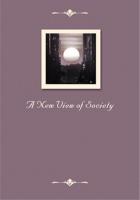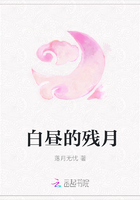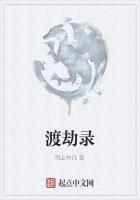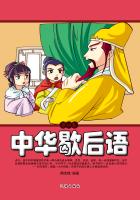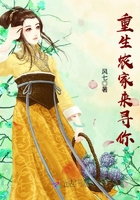Art of Ancient Egypt:Hieroglyphs and finereliefs
The ancient Egyptians produced art to serve functional purposes. For over 3500 years, artists adhered to artistic forms and iconography that were developed during the Old Kingdom, following a strict set of principles that resisted foreign influence and internal change. Images and text were intimately interwoven on tomb and temple walls, coffins, stelae, and even statues. The Narmer Palette, for example, displays figures that can also be read as hieroglyphs. Because of the rigid rules that governed its highly stylized and symbolic appearance, ancient Egyptian art served its political and religious purposes with precision and clarity.
Ancient Egyptian artisans used stone to carve statues and fine reliefs, but used wood as a cheap and easily carved substitute. Paints were obtained from minerals such as iron ores (red and yellow ochres), copper ores (blue and green), soot or charcoal (black), and limestone (white). Paints could be mixed with gum arabic as a binder and pressed into cakes, which could be moistened with water when needed.
Pharaohs used reliefs to record victories in battle, royal decrees, and religious scenes. Common citizens had access to pieces of funerary art, such as shabti statues and books of the dead, which they believed would protect them in the afterlife. During the Middle Kingdom, wooden or clay models depicting scenes from everyday life became popular additions to the tomb. In an attempt to duplicate the activities of the living in the afterlife, these models show laborers, houses, boats, and even military formations that are scale representations of the ideal ancient Egyptian afterlife.
Despite the homogeneity of ancient Egyptian art, the styles of particular times and places sometimes reflected changing cultural or political attitudes. After the invasion of the Hyksos in the Second Intermediate Period, Minoan-style frescoes were found in Avaris.The most striking example of a politically driven change in artistic forms comes from the Amarna period, where figures were radically altered to conform to Akhenaten’s revolutionary religious ideas. This style, known as Amarna art, was quickly and thoroughly erased after Akhenaten’s death and replaced by the traditional forms.
古埃及艺术:象形文字与精美浮雕
古埃及人创造艺术是为了功能性目的。3500多年来,艺术家们一直坚持在古王国时期发展起来的艺术形式和意象,遵循着一套严格的原则来抵制外来影响和内部变化。图像和文字密切交织在坟墓和寺庙的墙壁上,以及棺材、石柱,甚至雕像上,在纳尔迈调色板上显示的数字,就可以理解为象形文字。由于有严格的规则支配其高度风格化和象征性的外观,古埃及艺术精确而清晰地达到了其政治和宗教目的。
古埃及工匠用石头雕刻雕像和浮雕,或使用廉价和容易雕刻的木材来替代石头。油漆是从矿物如铁矿石(红和黄赭色)、铜矿(蓝色和绿色)、烟尘或木炭(黑色)和石灰石(白色)中提取的,涂料可以与阿拉伯胶混合成黏结剂并压成饼,需要时可以蘸水使用。
法老们使用浮雕来记录战斗胜利、皇家法令和宗教场景。普通公民可以获得几件陪葬艺术品,比如,沙伯提雕像和死者的书籍,他们相信这些东西会在来世保护他们。在中王国时期,描绘日常生活的木制或黏土模型成为填充坟墓的时兴物件,在试着模仿来世生活的活动场景中,这些模型扮演着房子、船只,甚至军事编队的角色,预示着古埃及人的来世生活的理想境况。
尽管古埃及艺术具有同质性,但是特定时间和地点的风格偶尔也会折射出不同的文化或政治态度。在第二中间时期,希克索斯人入侵后,米诺斯文明风格的壁画就在阿瓦里斯出现过。最突出的一个例子就是来自阿玛纳时期的一场政治驱动的艺术形式上的变化,那些变化从根本上服务于阿肯纳顿的革命宗教观念。这种风格称为阿玛尔纳艺术,在阿肯纳顿死后,它被传统形式迅速而彻底地取代了。
Religious beliefs of Ancient Egypt:The fairytale of the god protecting all living creatures
Beliefs in the divine and in the afterlife were ingrained in ancient Egyptian civilization from its inception; pharaonic rule was based on the divine right of kings. The Egyptians believed that the pantheon was populated by gods who had supernatural powers and were called on for help or protection. However, the gods were not always viewed as benevolent, and Egyptians believed they had to be appeased with offerings and prayers. The structure of this pantheon changed continually as new deities were promoted in the hierarchy, but priests made no effort to organize the diverse and sometimes conflicting myths and stories into a coherent system.These various conceptions of divinity were not considered contradictory but rather layers in the multiple facets of reality.
Gods were worshiped in cult temples administered by priests acting on the king’s behalf. At the center of the temple was the cult statue in a shrine. Temples were not places of public worship or congregation, and only on select feast days and celebrations was a shrine carrying the statue of the god brought out for public worship. Normally, the god’s domain was sealed off from the outside world and was only accessible to temple officials. Common citizens could worship private statues in their homes, and amulets offered protection against the forces of chaos. After the New Kingdom, the pharaoh’s role as a spiritual intermediary was deemphasized as religious customs shifted to direct worship of the gods. As a result, priests developed a system of oracles to communicate the will of the gods directly to the people.
The Egyptians believed that every human being was composed of physical and spiritual parts. In addition to the body, each person had a shadow, a personality or soul, a life-force, and a name. The heart, rather than the brain, was considered the seat of thoughts and emotions. After death, the spiritual aspects were released from the body and could move at will, but they required the physical remains (or a substitute, such as a statue) as a permanent home. The ultimate goal of the deceased was to become one of the "blessed dead".
古埃及宗教信仰:神灵保护众生的神话
古埃及文明自起源以来,对神明和来世的信仰就已经根深蒂固了,法老统治的基础是国王的神权。古埃及人认为万神殿里居住着众神,他们具有超自然力量,可以帮助或保护人世间。然而,古埃及人又认为神灵并不总是仁慈的,相信他们是需要祭拜和祈祷的。新的神明层次不断提升,万神殿的结构也不断变化,但祭司没有为这些变化作出过努力,这种冲突的神话故事有时会扩展成为一个系列剧。埃及人认为这些有关神明的不同概念并不矛盾,而是代表着现实的不同方面和层面。
众神被供奉在神庙里,由代表国王的祭司管理。在寺庙中心的神龛里,有一尊供膜拜的神像。寺庙不是礼拜场所或聚集地,只是在节日和庆典的日子里会抬出一尊神像来让世人膜拜。通常情况下,神域是封闭的,它们与外面的世界隔离开来,只有寺庙官员可以进入。普通市民可以在自己家里供奉私人雕像,护身符可以保护他免受混乱的侵袭。在新王国时期之后,随着宗教习俗转移为直接的神明膜拜,法老作为一种精神中介的作用日渐淡化。最终,祭司制定了系统的神谕,将神的旨意直接传达给人类。

